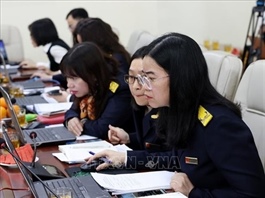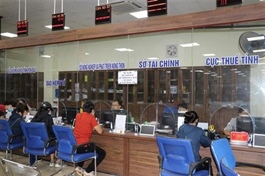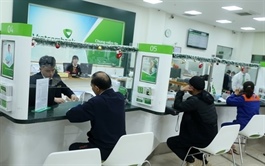Lenders stress importance of biometric measures
Lenders stress importance of biometric measures
The Vietnamese banking sector’s implementation of biometric verification for transactions has significantly enhanced payment safety and fraud prevention, despite initial technical challenges and substantial resource requirements.

At last week’s seminar on banking updates, Deputy Governor of the State Bank of Vietnam (SBV) Pham Tien Dung disclosed that as of July 3, banks had cross-verified 16.6 million customer accounts with biometric data from the Ministry of Public Security (MPS).
“These accounts are completely clean, representing a year’s worth of new accounts in the banking sector. Most account holders can verify via phones enabled with near-field communication (NFC), with a minority receiving support at bank branches. Some banks have already completed biometric verification for 2.6 million customer accounts,” Dung said.
He highlighted the banking sector’s proactive measures to combat fraud, which include extensive customer awareness campaigns. He noted, “Specifically, the SBV’s guidance on implementing Decision No.2345/QD-NHNN on June 28, is a concrete solution the banking industry is deploying.”
Decision 2345 addresses two critical issues: opening accounts with fake documents and opening accounts with genuine documents by unauthorised individuals. The biometric authentication requirement under the decision aims to ensure account legitimacy, verified against MPS-issued ID cards. Essentially, the decision cleanses the system of fraudulent and non-legitimate accounts.
However, the issue of renting accounts for illegal transactions persists. To counter this, Decision 2345 mandates facial verification for transactions exceeding $400, ensuring that the person conducting the transaction matches the account holder’s details.
“Banks are addressing application issues and expect to resolve them by the end of the week. Approximately 10 per cent of the 16.6 million accounts required in-branch support for biometric verification,” Dung said. “This is a significant campaign. It is imperative and unavoidable. The SBV has also instructed banks to rigorously combat fraud, including deepfake and static image impersonation technologies.”
Specific banks have reported progress in the process. Last week, OCB announced that its OMNI 4.0 digital banking system was operating smoothly, and the bank enhanced its technology infrastructure to ensure stable and rapid biometric verification for customer transactions.
Meanwhile, ACB reported that 500,000 customers had successfully registered for facial recognition verification. Techcombank stated that as of July 1, over 1.4 million customers had successfully updated their biometric data on Techcombank Mobile, accounting for more than 80 per cent of customers who regularly conduct transactions over $400.
Despite these efforts, many customers still visit bank branches to update their biometric data for money transfers. The inability to verify facial recognition for transactions over $400 has disrupted the business activities of frequent bank users.
Dr. Tran Manh Dung, former head of training at the Banking Academy, acknowledged the initial challenges in updating biometric data for bank accounts. He pointed out that difficulties are especially likely for those unfamiliar with technology, or when issues arise with the NFC chip readers on cards. “However, this step is essential to protect the interests of the public, particularly given the increasing number of online scams and asset appropriation,” Dung warned.
Huy Nguyen, co-founder of Phygital Labs – a startup focused on NFC solutions for digital identification – highlighted two factors affecting NFC scanning.
“Firstly, user behaviour plays a critical role. Many people continuously move their card around their smartphone to locate the NFC chip, but for NFC to work effectively, the chip needs to be held still, close enough to the device, and given time for the smartphone to read it. Moving the card too much can prevent the chip from accumulating enough magnetic field to transmit data,” Nguyen said.
Secondly, he stated, the technical aspect is crucial, particularly the antenna of the NFC chip.
“The larger the chip, the better the antenna reception. Smaller chips can cause scanning difficulties. However, the size of the chips on current cards generally does not pose a problem,” Nguyen said. He also noted that there is a slim possibility of phones with NFC capabilities having faulty chip readers, but this is a rare occurrence.
According to the SBV, transactions of $400 or more account for only 11 per cent of total transactions, with many cases involving multiple transactions by the same individual. The number of individuals conducting transactions exceeding $800 in a single day is just 0.56 per cent. Approximately 70 per cent of personal payment transactions in Vietnam are valued at less than $40.
As of the end of 2023, the MPS had issued over 84.7 million chip-embedded citizen ID cards and 70.2 million VNeID accounts, ensuring the data is accurate, complete, clean, and live.
“Implementing this is not only the responsibility of service providers, credit institutions, and regulatory agencies but also the responsibility of customers and every citizen,” said Pham Anh Tuan, director of the Payment Department at the SBV.
Tuan noted that implementing Decision 2345 requires significant resources from credit institutions and payment intermediaries. “With a sense of community and social responsibility, credit institutions are making considerable efforts to minimise fraud risks and ensure payment security and safety for customers,” he added.



























